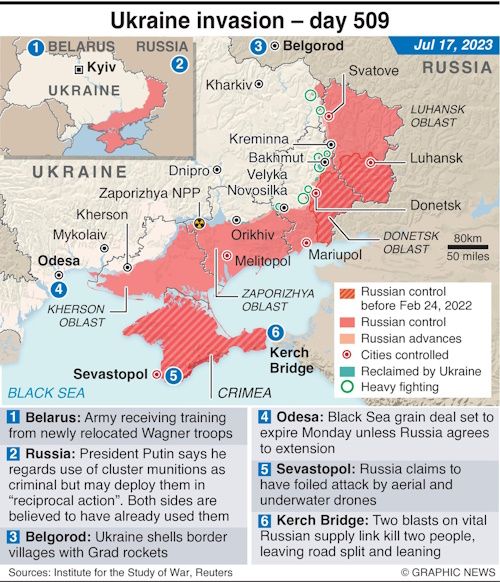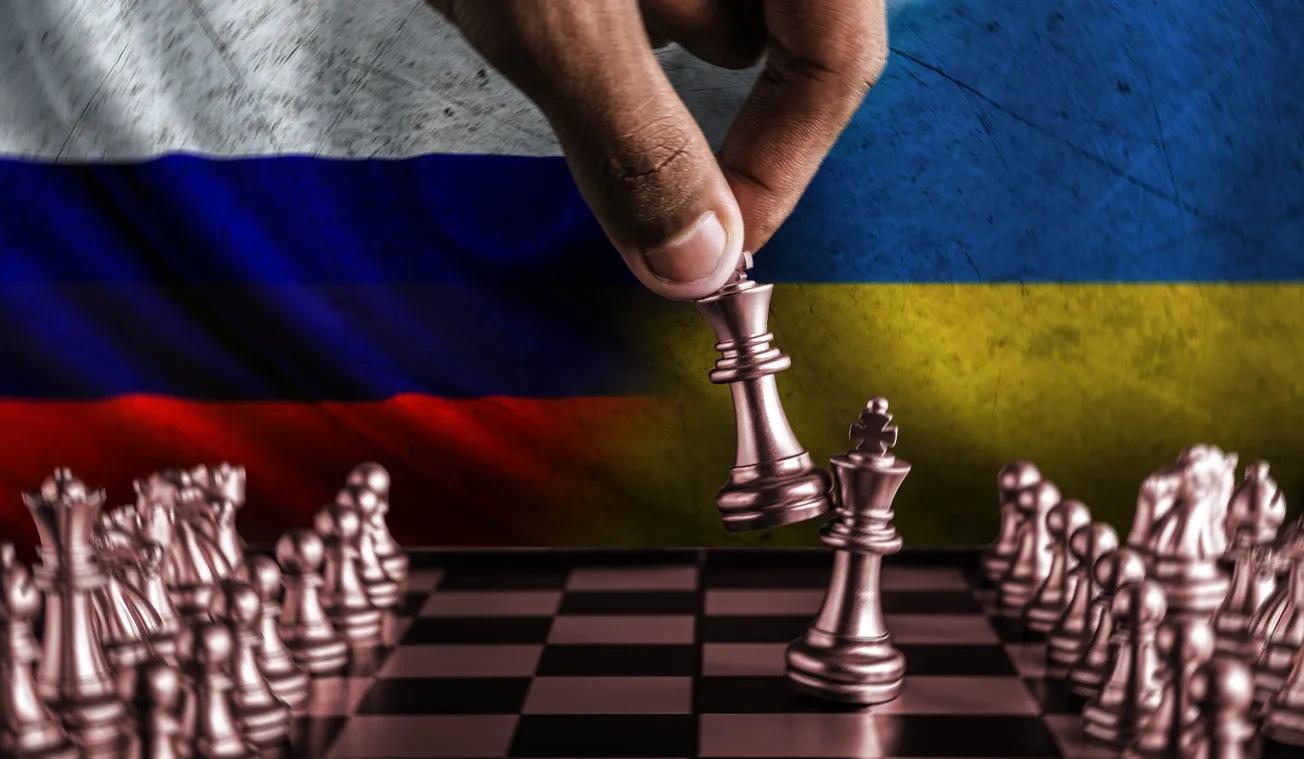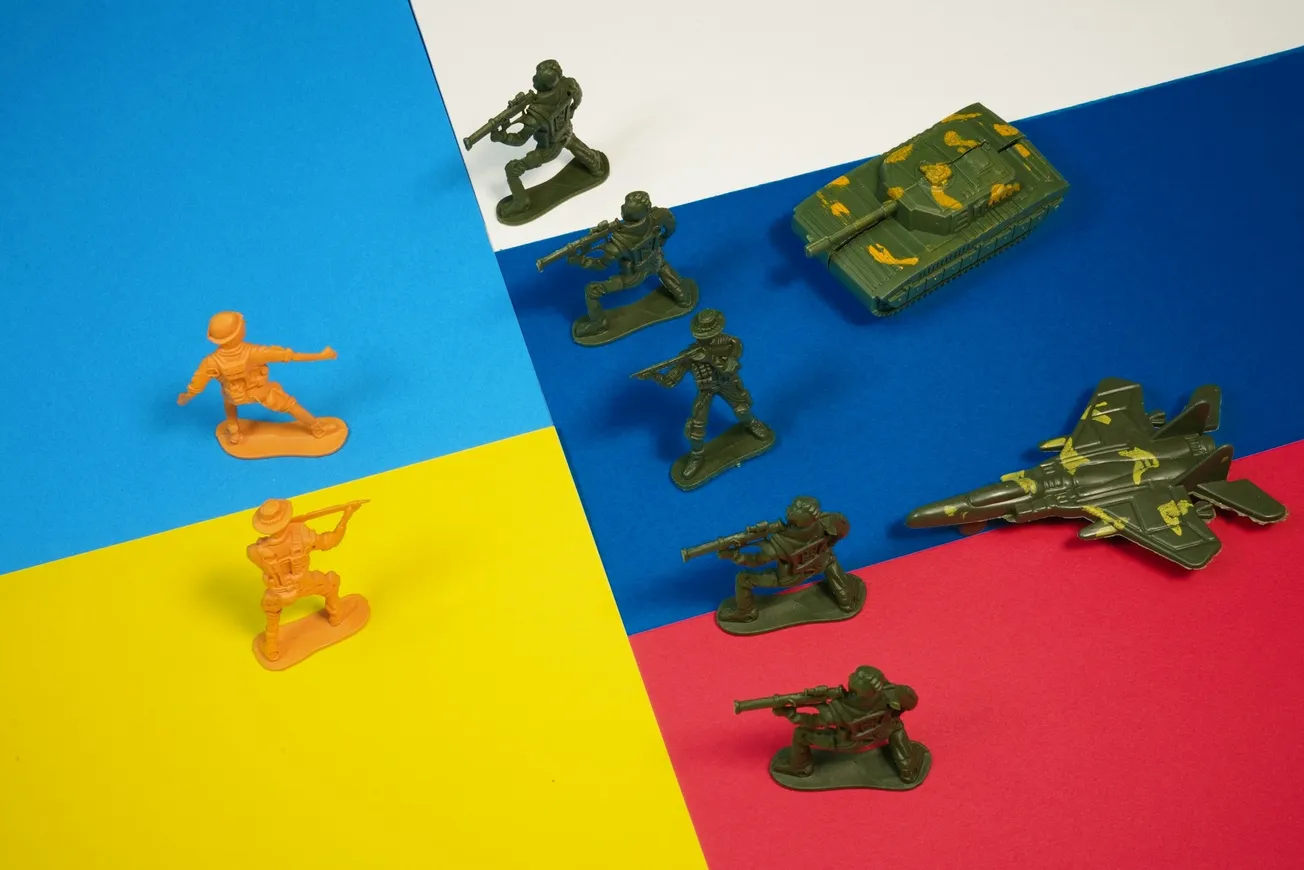For the most consequential conflict in the first quarter of the 21st century, the world is hopelessly uninformed about the Ukraine war. Every media outlet has its own ideas about events in the theater.
No single factor in the war has been more critical than Kyiv’s supposed counter-offensive, a move designed to retake territory from Russia. Various Western governments have promoted the flow of billions of dollars in military aid, and controversial decisions, such as sending Ukraine cluster ammunition, as essential to the counter-offensive. Yet, no American knows precisely what is happening on the battlefield.
We examined 15 headlines about the counter-offensive, and the breadth of coverage illustrates the confusion the average reader is left with.
Pro-Ukraine Coverage
- Putin Has 'Already Lost' Ukraine War, Says Biden - Kyivpost, July 14.
- Russian positions abandoned in Ukraine counter-offensive - CBS News, July 14.
- Don't Believe Russia About Ukraine's Counter-offensive - Business Insider, June 27.
- Ukraine Counter-offensive Failure Reports Are 'Nonsense.' - Newsweek, June 23.
- Ukraine says 'biggest blow' yet to come in counter-offensive - Al Jazeera, June 20.
- Ukraine's Counter-offensive Making Progress, Stoltenberg - Radio Free Europe/Radio Liberty
Pro-Russian Coverage
- Putin: Ukraine has failed to break through Russian defenses - Jerusalem Post, July 16.
- Ukraine's much-touted counter-offensive appears to be tumbling largely due to the Russian military's excellent military tactics and cutting-edge weapons - The Eurasian Times, June 28.
- Ukraine's counter-offensive stalls against Russian forces - LeMonde, June 22.
- Ukraine's losses are vast in so far failed counter-offensive - Arabiya.net, June 13.
- Kyiv accepts counter-offensive not advancing quickly - The Guardian, July 14.
Grudging Acceptance But Explaining It Away
- Why Ukraine Is Struggling to Puncture Russia's Formidable Defenses - Wall Street Journal video, July 10.
- Why Ukraine's Counter-offensive Is Off to a Slow, Bloody Start - New York Times, June 26.
- Ukraine's counter-offensive: Why progress has been slow - CNN, July 4.
- 'Time is ticking' on Ukraine counter-offensive — so why doesn't it appear to be working? - Daily Express, July 12.
TIPP Conclusion
While we are not military experts, we can conclude that the Ukrainian counter-offensive is unlikely to meet President Zelenskyy's ambitious goals of evicting all Russians and returning Ukraine to pre-2014 borders. Here's a partial list of factual snippets upon which we reach our conclusion.
In his interview with CNN's Fareed Zakaria, justifying his authorization to send cluster weapons, President Biden admitted that Ukraine was running out of 155 mm ammunition. We already know that Russia has at least a 5-1 advantage in artillery, the most critical battle element.
Battlefield maps produced by think tanks, such as the Institute for the Study of War, show that Russia continues to occupy vast tracts of Ukrainian territory.
According to Wikipedia, before 2022, Russia occupied 42,000 sq. km of Ukraine (Crimea and parts of Donetsk and Luhansk). After its full-scale invasion, Russia acquired an additional 119,000 sq. km or nearly 27% of Ukrainian territory. By November 11, ISW calculated that Ukrainian forces had liberated an area of 74,443 sq. km from the Russians, leaving Russia still with about 86,500 sq. km, 18% of Ukraine's territory.
In the last six months, both sides have made little progress. According to the BBC, Ukraine may have reclaimed about 245 sq. km of territory since the counter-offensive was launched, about the same area Russia newly acquired - amounting to a wash.
It is easier for a warring party to defend territory than acquire new land. Russia has invested heavily in fortifying its defenses in the vast open fields of southern and eastern Ukraine that it has taken. In an excellent analysis of how the Russians have tactically deployed mines, trip wires, booby traps, and improvised explosive devices, the New York Times quoted a Ukrainian private named Serhiy, part of a unit that rescued the soldiers wounded by the explosions. "I couldn't imagine something like this. I thought mines would be lain in lines. But whole fields are filled with them, everywhere." The result: Ukrainian forces are bogged down only a few miles from where they started.
Western leaders have poured financial and military assistance into Ukraine and note ruefully that one commodity is in real short supply: Time. Political headwinds in their home countries - as they fight inflation and weakening economies - could handicap continued, limitless support for the war.
Tensions ran high during the recent Vilnius NATO summit when Zelenskyy's demands for admission to the bloc immediately after the war were rejected. In the most high-profile disagreement, British defense secretary Ben Wallace warned that Ukraine must show "gratitude" to its allies. While this amounted to a major crack in Western unity, the fire was quickly put out.
Media coverage on the Russian side of the conflict is even more confusing. Big Tech companies such as YouTube and Facebook have banned Russian media outlets from publishing content. Western reporting is mainly based on hearsay and adds to inaccurate speculation, most of which ends up being wrong.
For instance, during the Wagner mutiny, Western leaders and media outlets made outlandish predictions about how the command and control of Russia's armed forces were at risk. Media analysts openly wondered what would happen if Putin were deposed. But Putin's position was never under any threat.
Yet no one has authoritatively explained what happened during and after the Wagner drama. Why did the fast-moving convoy towards Moscow suddenly stop? Did the mercenaries go to Belarus? What percentage? Did Wagner's military head meet President Putin? Are the Wagner soldiers regrouping to fight offensives against Ukraine in August?
It is all a blur - the way Western leaders like it, as it makes it easier to funnel even more funds and military support to Kyiv in what appears to be a failing cause.
Related Infographics

Like our insights? Show your support by becoming a paid subscriber!









